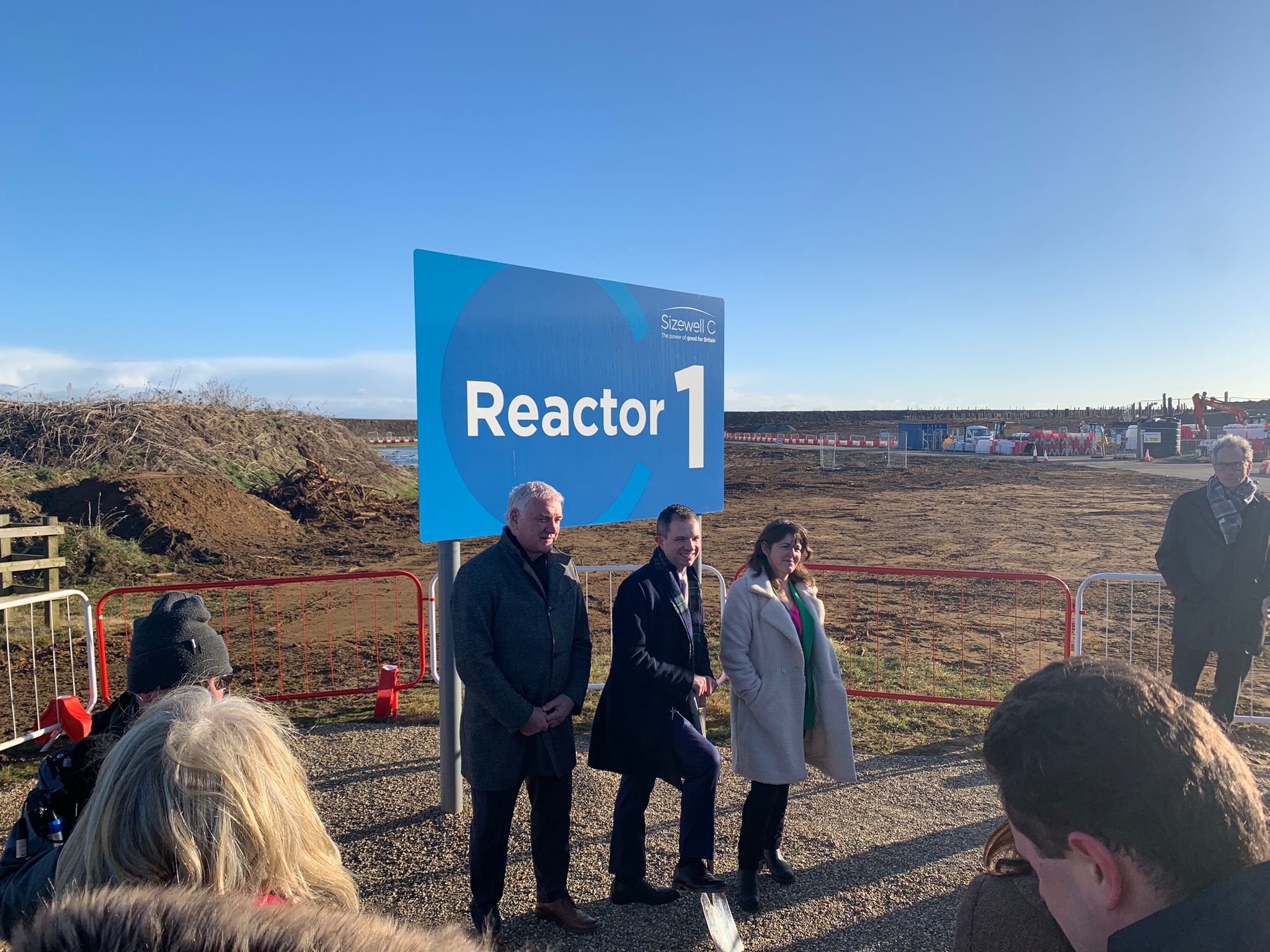What is Sizewell C?
Development Consent Order (DCO), 2024
As of January 15th, 2024, the commencement of Sizewell C’s Development Consent Order (DCO) occurred, signifying a monumental milestone for the project, bringing it closer to the commencement of construction activities. This milestone marks the imminent start of the “Shovels in the ground” operation. With the formal commencement of the Development Consent Order (DCO), construction activities for Sizewell C can now commence, leading to job creation and the vital support of local businesses. The enthusiastic backing from the local community and various stakeholders highlights the collective realisation that Sizewell C power plant can significantly contribute to the achievement of the UK’s carbon reduction targets. By playing a crucial role in reducing carbon emissions, Sizewell C is paving the way for a brighter future for everyone involved.
Nuclear Minister, Andrew Bowie, said: “This is a major milestone for Sizewell C and our ambition to deliver up to 24GW of low-carbon nuclear power by 2050. It comes after we announced the biggest expansion of nuclear power for 70 years which will help to bring down bills and bolster our energy security. East Anglia will benefit from thousands of new jobs and apprenticeships as a result, demonstrating the local rewards of backing new nuclear.”

The commencement of the Development Consent Order, released a £250 million funding package which will be released during phases of the project; funding includes £23m for community projects, £100m for the environment, £12m to support local tourism, and a £12m housing fund to boost private housing and tourist accommodation.
As the development of Sizewell C gathers momentum, the project promises to deliver a myriad of benefits….
Construction benefits
Sizewell C’s two nuclear reactors will mirror the design of Hinkley Point C in Somerset, offering cost advantages in construction, financing, and competitiveness compared to other low carbon technologies. This is because its design has already obtained approval, and its equip ment has successfully undergone rigorous nuclear safety qualification tests.
ment has successfully undergone rigorous nuclear safety qualification tests.
The establishment of Sizewell C would unlock significant economic opportunities in the East of England, generating high-skilled and well-compensated employment opportunities, as well as contracts for local businesses. The project is projected to create approximately 2.6k construction jobs in Suffolk alone and support an additional 70k jobs across the UK. These numbers demonstrate the substantial positive impact Sizewell C will have on both the local and national economies.
Socio-economic benefits
The impact of Sizewell C on the regional economy is remarkable. It is estimated that £4 billion will be injected into the local economy, creating numerous job opportunities. This includes 2,500 Suffolk Construction Jobs, 70,000 jobs across the UK, and 900 jobs for the operation of Sizewell C over its 60-year lifespan. Additionally, the project will rely on the support of 3,000 UK-based suppliers, and will also provide apprenticeships and graduate programs. Not only does Sizewell C contribute to tackling climate change by providing reliable, low carbon electricity for decades,
but it also brings about long-lasting social and business benefits. As such, Sizewell C truly embodies ‘The Power of Good For Britain.’

Sustainability benefits
At Sizewell C, environmental responsibility and sustainability are top priorities. The project is fully committed to achieving Net Zero and integrating clean technologies into its construction and operation. A clean energy hub has been established to support the use of innovative technologies such as the Direct Air Capture Proposal and Low-carbon hydrogen production. In fact, Sizewell C is collaborating with Wrightbus to pilot and produce hydrogen-powered buses, which, if successful, could result in the transportation of thousands of workers to and from the site using hydrogen double-decker buses.
In addition to their focus on clean energy, Sizewell C is dedicated to preserving wildlife and ecosystems. Their track record at the Sizewell B power station has earned them The Wildlife Trusts’ Biodiversity Benchmark, recognising their conservation efforts on the Sizewell estate. To mitigate the land required for Sizewell C, they have already developed the Aldhurst Farm Wetland Habitat Creation scheme. This 67-hectare site includes 6 hectares of wet reed habitat, extensive reedbeds, interconnecting ditch habitats, and heathland. By prioritizing the environment and fostering biodiversity, Sizewell C demonstrates its commitment to sustainability and the well-being of local ecosystems.
Sizewell C Project Overview
We understand that keeping up with the ongoing advancements of the Sizewell C project can be challenging. To assist you, we have prepared a comprehensive slide document that provides a complete overview of the project’s fundamentals. In this document, you will find detailed information about various aspects of the project, such as: milestones, transport strategy, civil work programme, DCO (Development Consent Order) investments and much more. To access the Sizewell C Project Overview and gain a better understanding of the project’s progress, please click the link below.
Sizewell C Works Tracker
The Sizewell C work tracker provides quick and easy access to a schedule of work being carried out on Sizewell C; providing the latest information on when and where works are taking place. It also lets you track the progress on work being undertaken. Click the map to find out more.

